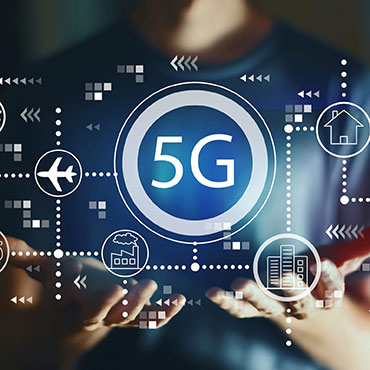Is The Chip Shortage Preventing The 5G Rollout?
After a long stagnation period due to the pandemic, production is resuming in more industries, but the supply of chips that power most devices is limited. Researchers say that the shortage is severe in the automobile industry and is likely to last throughout 2022.
The microchip shortage started as people stocked up on PCs and other electronic devices and has affected the automotive industry and other electronic firms like Qualcomm AMD, and has also affected the production of Sony’s PlayStation5.
Factors That Led To The Chip Shortage
The demand for electronics and PCs saw a massive boom during the pandemic. With everything shifting to remote work, including school and offices, the demand for home PCs and other related electronics increased. Following this, home entertainment gadgets also increased in demand by the end of the pandemic. TVs to smartphones, tablets, and game consoles were making unbelievable sales.
The pandemic caused the highest growth in PC sales since 2010! All these electronic devices require a ton of chips, not only the central CPU, which can cost thousands of dollars, but also more minor chips that control the display, manage power, and operate a 5G network.
The unprecedented increase in demand for PCs and electronics was the first factor leading to the global microchip shortage.
Another reason for the shortage is poor planning. During the pandemic, many manufacturing and production sectors completely shut down, just like most of the world, while canceling supply chain orders. These suppliers had no problem finding other markets that were doing pretty well despite the pandemic.
Add in the development of the 5G smartphone and the trade penalties imposed by the US on China before the pandemic, and you have a recipe for disaster. This meant that Huawei, one of China’s top 5G smartphone manufacturers, would be unable to purchase processors after a specified time. Therefore, they placed large orders to not experience any shortage after that. So did other smartphones, like Apple, as they increased demand during the pandemic.
Other minor factors that exacerbated the problem are the earthquake in Japan and a fire at a semiconductor fabrication plant, and a winter storm in Texas in March.
Affected Industries
The automotive industry has been affected the most due to the microchip shortage. Although cars and the electronic industries are not in direct competition, cars need some tiny chips needed to operate certain features like power management.
While the automotive industry faces a microchip shortage, it isn’t the only industry affected by this. Many global networks have had to slow down 5G rollouts as well.
According to researchers, global 5G network connections are targeted to grow to 637 million, three times from last year. However, ongoing semiconductor shortages might hinder growth in the coming months.
Many telecom providers in China, North America, and western Europe successfully overcame the threats during the pandemic and continued to roll out 5G networks. South Korea, which is the world leader in 5G is predicted to have over 30% 5G mobile connections in the beginning of 2022. While China was an early adopter of 5G, sluggish smartphone demand in 2021 is expected to limit 5G to only 24% of all cellular device connections by the end of the year. The US is also predicted to have only 25% adoption of the 5G network.
On the other hand, Western Europe continues to lag, owing to prolonged spectrum sales in some countries, delayed government decisions on Huawei’s role, and diminished demand for mobile phones due to the pandemic. Despite the fact that the pace of 5G deployment is increasing, this slow start means that 5G will not account for more than 50% of cellular connectivity options in the area until 2024.
5G, like all large-scale technologies, requires time to spread out and have an impact that the everyday customer or business can see. The narrative will inevitably evolve, and 5G will become crucial for much of the modern individual and corporate experience.
How rapidly consumers adopt 5G hinges on their willingness to acquire 5G-capable gadgets after the spectrum is released and telecom companies begin constructing 5G networks. The worldwide mobile phone industry is expected to rebound this year, and 5G handset prices continue to plummet. The prediction of 3.6 billion 5G connections globally by 2025 is still on schedule.






